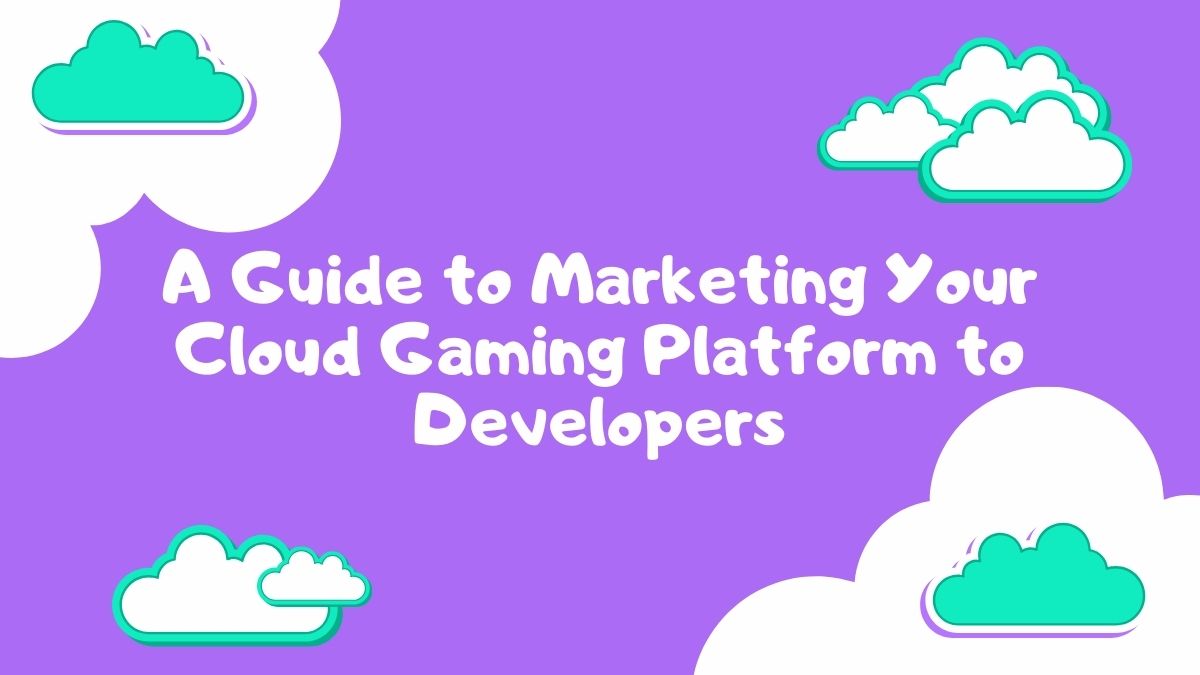
Cloud gaming is taking the industry by storm, with players demanding high-performance experiences on any device. Developers are trying to keep up, facing the challenge of creating stunning games while navigating the rocky new landscape. Choosing the right cloud gaming platform is critical – you need a partner that empowers you to focus on what matters most. This article will teach you how to attract the brightest and best developers to your cloud gaming platform, covering everything from search engine optimization to Kubernetes.
Understanding Your Target Audience
The cloud gaming market is enormous in 2024, and developers come in all shapes and sizes. Tailoring your marketing message effectively is essential for success, but this means understanding your audience’s preferences and specific needs. Here’s a brief overview of some of the key developer types to consider:
- Indie developers. Indie devs often have limited resources and budgets, meaning they favor accessibility and ease of use. They require a platform allowing for quick and effortless porting of their games to a larger audience but with minimal upfront investment costs.
- AAA studios. These studios are all about delivering high-fidelity experiences. AAA studios may be interested in cloud gaming features for improving graphics rendering or offering large-scale multiplayer functions.
- Mobile-first developers. These developers are focused on creating great mobile game experiences. Cloud gaming can help mobile-first developers overcome hardware obstacles.
- Established developers with legacy games. Developers with a well-established legacy library may view cloud gaming as a means of opening up old games to new audiences but without the requirement for extensive re-development.
Having a solid understanding of the audience goes much deeper than the developer’s size. You need to think about what channels these developers use. For example, indie developers might rely on online forums and social platforms, while AAA studios typically rely on conferences and industry publications.
Aligning your marketing campaigns with the common pain points of your target audience will ensure your cloud gaming platform stands out as a force within the industry.
Highlighting Your Platform’s Advantage for Developers
Like any successful marketing campaign, the key is offering real value to customers, which means showcasing how your features can benefit game developers. This section explores potential advantages for developers using cloud gaming services.
The most obvious benefit is that cloud gaming removes barriers to entry. This means developers don’t have to worry about configuring their games to reach global audiences using a mix of devices. Instead, cloud gaming platforms bring titles to mobile, consoles, PCs, tablets, and smart TVs with minimal effort.
Your cloud gaming platform will reduce development costs significantly. Many studios face financial obstacles including purchasing and managing expensive high-end hardware. By using your cloud gaming platform, developers push the majority of their resources into game development.
Many platforms also provide developer tools that help streamline the process of integrating existing titles with cloud gaming functionality. The availability of such tools allows developers to get their games in front of the right players much faster.
Game developers familiar with containerized deployments will benefit from managed Kubernetes. If this is something your platform facilitates, shout it from the rooftops. Managing Kubernetes clusters natively is costly and resource-intensive. Removing these stressors will tap into a unique market of developers.
When you make claims about your platform’s advantages, it’s important to add real value by backing them up with evidence.
Effective Marketing Strategies to Reach Developers
Getting your message across to the right developers for your cloud gaming platform involves a targeted approach. Here are some considerations to make when building your marketing strategy:
- Content marketing. All content across every channel needs to add true value to developers. This could include blog posts, tutorials, white papers, success stories, and much more.
- Choosing the right channels. Each type of developer will be active on specific channels. Spend time learning where your audience is “hanging out” online, and target content for those platforms.
- Attend industry events. Conferences, hackathons, and meetups centered around game development provide a fantastic opportunity to connect directly with developers.
- Be active online. Scour the internet for relevant developer forums and communities, and then get involved.
- Trial programs. Let developers see what you’re made of by offering a trial period or freemium model.
By integrating these into your strategy and tailoring your marketing efforts for certain developers, you can effectively reach the people who will elevate your cloud gaming platform to the next level.
Building a Strong Developer Ecosystem
To ensure long-term success for your cloud gaming platform, it’s important to build a solid developer ecosystem. This ecosystem should promote innovation, knowledge sharing, collaboration, and complete benefit for developers.
Encouraging open communication and collaboration between your platform and developers is fundamental. Host regular AMAs and online forums for developers to interact with your team. Offer clear documentation and a wealth of APIs for developers to play around with.
Advocate for developers by creating programs for developers to become champions of the platform. This could include training, resources, and a knowledgeable support team prepared to answer any questions.
Integrate a dedicated knowledge-sharing hub for developers. This could include tutorials, snippets of code, and information on best practices. Encourage developers to contribute their knowledge in an open forum.
The Future of Cloud Gaming Development
The future of cloud gaming burns bright. The industry can expect a transition towards “cloud-native” games designed specifically for the power of cloud gaming platforms. Integration with AI and ML is also making its way into the space and will lead to more personalized experiences. Additionally, lower barriers to entry are empowering a wave of indie studios to approach cloud gaming infrastructures. By embracing innovation and creating a strong developer community, cloud gaming has the potential to disrupt the entire gaming landscape. To make sure your platform is front and center in the upcoming cloud gaming revolution, spend time learning how to market to developers. Look at how your platform complements different types of developers, assess common pain points, and then make as much noise as possible. However, it’s important to ensure each piece of content offers true value.




